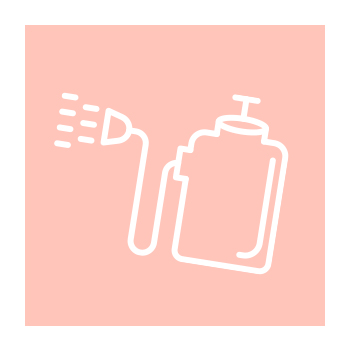


Sign-up for {N}power to get exclusive discounts, newsletters, members-only features, and more!

Endocrine disruptors are all around us. They are in an array of consumer products that we use every day: personal care products, cookware, cleaning supplies, food containers and wrappers, even furniture and electronics. They are in our food and water. Our homes. They are everywhere. They are persistent. And they are harmful to our health.

In the simplest terms, endocrine disruptors are man-made chemicals that interfere with the body’s endocrine system, the system that makes our hormones. These hormones include everything from estrogen and testosterone to insulin and cortisol to thyroid hormones and melatonin. Their functions run the gamut: they regulate blood pressure and maintain blood sugar; stimulate muscle growth and affect growth and development; control production of sex hormones and the development of eggs in women and sperm in men; control metabolism and help with sleep, and that’s just the beginning. From head to toe, from birth until death, hormones are the messengers that keep our bodies running smoothly.
Endocrine disruptors are just that—they disrupt, bring disorder, upset, or disturb our hormonal systems. Some endocrine disrupting chemicals interfere with the system’s normal functioning, while others actually mimic specific hormones.
Exposure to endocrine disruptors is linked to a growing list of health issues including infertility, prostate and breast cancer, early puberty, including early onset of menstruation in girls, diabetes and obesity, behavioral and learning issues, including ADHD, reduced sperm production, quality, and viability, and cardiovascular disease.1 2 One of the things that makes endocrine disruptors so insidious is that the effects aren’t immediate, rather, they develop slowly over time. But by learning about them, where they’re found, and how to avoid them, you can protect yourself and your family from their damaging health effects.
There are thousands of manmade chemicals that may have endocrine-disrupting properties, but here we will cover a few that most of us are routinely exposed to. These include pesticides, phthalates found in soft plastic and personal care products, and per- and polyfluoroalkyl substances (PFAS), used as oil, stain, and water repellents in a variety of consumer products.

More than 100 different pesticides (including insecticides, herbicides, and fungicides) have been identified to have endocrine disrupting properties. Some of them are widely used, including 2,4-D, acephate (an insecticide the EPA recently proposed easing restrictions on),3 atrazine (which biologists discovered can turn male frogs into females),4 chlorpyrifos, glyphosate, and permethrin. Some of their effects include having androgenic and estrogenic properties, disrupting normal thyroid hormone production, damaging the adrenal glands, increasing and/or decreasing specific hormones including cortisol, estrogen, and testosterone, increasing insulin in the blood, and reducing fertility.5
These chemicals are industrial plasticizers that help make plastics softer and more flexible; they are widely used in personal care products to moisture skin, to make fragrances last longer, and to dissolve and blend ingredients. Phthalates are used to make plastic food containers, plastic wrap made from PVC (look for recycling label #3), and are found in personal care products like nail polish, lotions, shampoos, perfumes, colognes, and even toothbrushes.6
One unexpected place you can find phthalates is in restaurant food. Researchers from a recent study found that people who ate more meals from fast food joints, restaurants, and cafeterias had consistently higher levels of urinary phthalates compared to people who cooked at home with food from the grocery store. The group with particularly high levels? Adolescents. Among adolescents, those who frequently ate meals out had 55 percent higher endocrine-disrupter levels compared with their peers who ate at home, according to the lead author. The researchers named “food contact materials and industrialized production” as routes of exposure.7

This is the group of chemicals that you have probably heard referred to as “forever chemicals,” because they are so persistent in the environment. As a researcher and associate professor of biological sciences from North Carolina State University said, “This entire class of chemicals is probably the most persistent class of manmade chemicals that have ever been made.”8 There are thousands of these chemicals and they are used to make consumer products stain- and water-resistant, oil-resistant, “nonstick,” fire-resistant, and more durable. They are found in innumerable products like dental floss, food wrappers, nonstick cookware, cleaning products, personal care products, clothing, smartphones, tampons, toilet paper, and even tap water. A report from the Centers for Disease Control and Prevention, using data from the National Health and Nutrition Examination Survey (NHANES), found PFAS in the blood of 97 percent of participants.9 According to the Environmental Protection Agency (EPA), exposure to PFAS may lead to reproductive effects, including decreased fertility, developmental effects or delays in children, increased risk of some cancers, and a hampered immune response.10
All of this may sound very doomy and gloomy, and truth be told, it is. BUT, there are ways to reduce our exposure—quite a few, in fact. Buying organic food is one of the most substantial things you can do to significantly limit your exposure to endocrine-disrupting pesticides. One recent study found that eating organic meals for just one week dramatically reduced pesticide levels in all ages (on average, levels were reduced by 60%), including known endocrine disruptors.11 Eat as much organic food as you can and don’t rely heavily on take-out food or restaurant meals—save those for special occasions.
Read labels on everything! Especially pay attention to cleaning and personal care products—avoid products with phthalates in the ingredient lists. Avoid products that list “fragrance,” as this catch-all term usually signals hidden endocrine disruptors. Ditch synthetic perfumes, colognes, and body sprays altogether—they likely contain phthalates and PFASs. Opt for mineral sunscreen rather than chemical ones—the sunscreen chemicals themselves, such as oxybenzone, avobenzone, and homosalate, are known endocrine disruptors.12
When it comes to packing food, avoid plastic whenever possible. Use glass or stainless-steel containers or lunch boxes and use beeswax-coated cloth to replace plastic wrap. Replace plastic water bottles with glass. Avoid non-stick cookware and instead use stainless steel, cast iron, and/or enameled cast iron. Invest in a water filter that will remove endocrine disrupting chemicals from tap water—a recent study by the U.S. Geological Survey found that at least 45 percent of the nation’s tap water contains one or more types of PFAS.13 Look for activated carbon and/or reverse osmosis, as these two types have been shown to reduce PFASs in water.14
This may seem like a no-brainer, but keep your house clean and dust free—PFASs accumulate in dust. When you buy clothing or textiles for your home, consider natural fabrics like cotton, linen, and hemp rather than polyester, nylon, or other synthetic fabrics, which are likely to contain endocrine disrupting chemicals. Support your body’s natural detoxification process with liver-supporting supplements like milk thistle and N-acetylcysteine (NAC). Take your probiotics! A study published in late 2023 found that the consumption of probiotic supplements was associated with a significant reduction of specific PFASs in the blood.15
Most importantly, continue to educate yourself and use your voice—and purchasing power—with companies and decision makers to ask for better labeling and more testing to keep these dangerous chemicals out of our homes. Become an activist and demand that policy makers address the very real issue of endocrine disrupting chemicals that have become so ubiquitous in our food, our water, and our homes. We all deserve better!



Sign-up for {N}power to get exclusive discounts, newsletters, members-only features, and more!